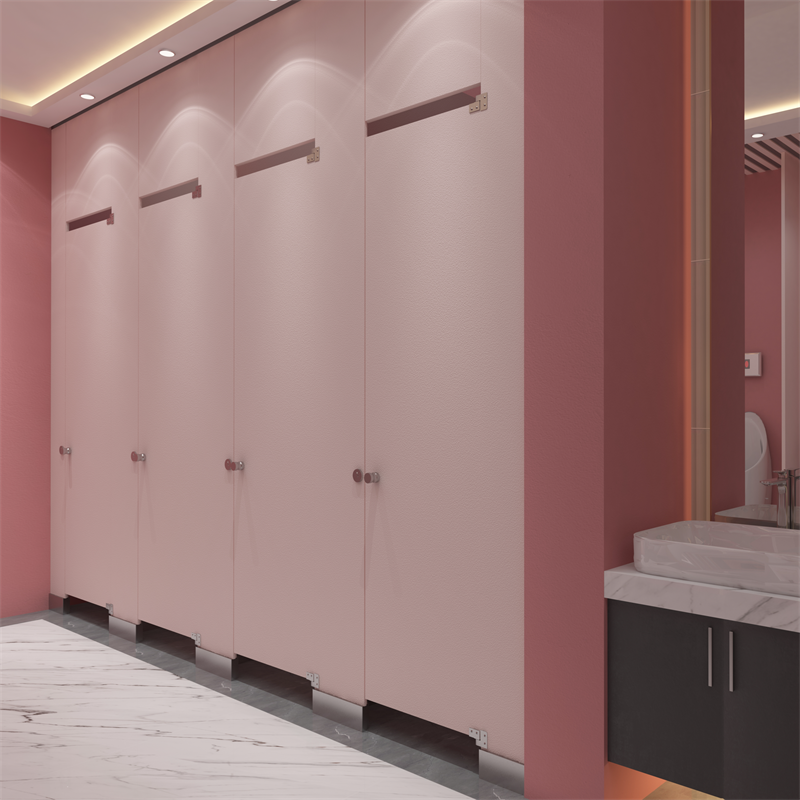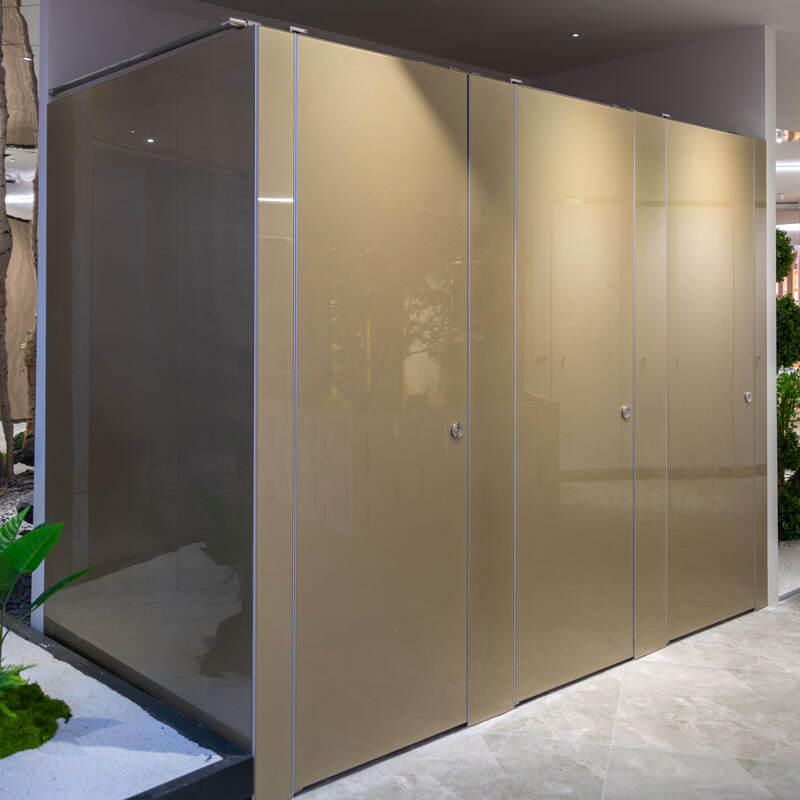Public buildings like shopping malls, office buildings, schools, and hospitals have large traffic of people, and the toilet stall used in these places have to meet a high standards of safety, durability, and comfort. Being a professional provider of public facility solutions, CNCUBICLE has vast experience in the design and provision of high-quality toilet stalls to numerous public buildings. For the public, the user experience of a toilet stall has direct impact of operational and maintenance costs of the building. For public building managers, knowing the common critical details designed to identify the right toilet stall, encourages better purchasing decisions. Thus, this blog seeks to explain the critical details when choosing a toilet stall for a public building.
For any public building scenario, the toilet stall materials determine the durability and applicability of the stall. For toilet stalls in public buildings where humidity is high, such as hospitals and swimming pools, moisture resistance must be a key consideration to prevent variation, mold growth, and deformations.
For privacy cubicles in these areas, CNCUBICLE advocates for moisture barrier materials such as stainless steel, along with phenolic resin boards, as they are waterproof and easy to clean. Stainless steel also offers great corrosion resistance. For office buildings and shopping malls where aesthetics is of greater value, the stall toilet can use solid wood particle boards with melamine (melamine veneer) as they are visually appealing and blend with the overall decoration style of the building. Proper materials accommodate a toilet stall to the specific environment of the public building and prolong its lifespan.

With respect to user comfort and accessibility, the toilet stall design requires attention to size and layout. In public buildings, the size and layout of the toilet stall should be designed to accommodate and accommodate body diverse users and still allow for the stall to be designed to accessibility standards for seniors and people with disabilities.
According to CNCUBICLE, a regular toilet stall should measure a minimum of 90 cm wide and 150 cm deep to provide sufficient space for users. For an accessible loo, the minimum width should be 120 cm, the length 180 cm, and there should be no barriers of any kind around the toilet stall to ease wheelchair movements. Positioned relative to the flow of people, the layout of toilet stall in a public space should, for instance, place more toilet stalls in busy shopping malls to decrease users’ wait times. The provision of adequate size and layout improves toilet stalls in terms of accessibility and user experience for varied demographics.
Public toilet stalls are used by numerous people daily, and in their design and architecture used any public toilet stump should never]] be overly neglected as it can create a hazardous environment for users.
The first safety feature implemented is the anti-collision design of the toilet stall-CNCUBICLE's toilet stall incorporates soft rubber strips on the edge of the door to minimize the impact force of the closing door and prevent hand pinching. The second safety feature is the stability of the toilet stall frame--toilet stall frames should be constructed of thickened metal materials and connection components should be strong and firm to prevent the toilet stall from shaking or collapsing from continued use. In addition, the toilet stall door lock should be easy to operate, and the “occupied” and “vacant” indicators should be clear and easy to distinguish so that users do not accidentally open the door. All safety features outlined above are designed to protect the public and minimize the risk of accidents occurring during toilet stall use.
The design of toilet stalls in public buildings should protect the privacy of users. Public toilet stall users have significant privacy needs, so the stall design should fully minimize privacy oversights.

CNCUBICLE considers these details with regard to privacy in the design of the toilet stall: first, the height of the toilet stall partition— it should be at least 15cm higher than the ground and 20cm lower than the ceiling to avoid other people peeking through the gaps. Second, the gap between the door and the partition of the toilet stall— this should be controlled within 1cm to avoid exposing the user to others. Third, the gap should not be transparent and the stall partition should not be able to be seen through and should not have holes or gaps that may leak privacy. A toilet stall with good privacy protection design can make users feel more secure when using it, thus, feeling more satisfied with the public building’s facilities.
Cleaning and Maintenance Convenience of Public Toilet Stall
Building managers of public facilities should focus on the details of a toilet stall that impacts their daily operation and maintenance cost and this in turn impacts the cost of the entire building. A toilet stall that is designed to be easily cleaned and maintained can save a building a lot of labor and material cost.
CNCUBICLE toilet stall design considers ease of cleaning and upkeep: the toilet stall partition features a smooth, non-porous surface that can be cleaned and not stained with basic cleaning agents. The connections of the toilet stall have a detachable design, further facilitating the replacement of damaged components and ease of maintenance. Also, toilet is a stall surface materials should be damage and heavily wear resistant to prolong the intervals between replacements. Such durability ease maintenance and cleaning, which is crucial for building managers to maintain long-term operational cleanliness and for managers to maintain long operational cleanliness.
Cleansing the toilet stall in public monuments should make sure the toilet stall conforms to the local and international law. Each of the use toilet stall has design and bathroom cleaning materials standards one route for the other designated in the geographical standards and needs.
In China, specific guidelines for toilet stalls can be found under the “Code for Design of Public Toilets” (CJJ 14-2021). These guidelines outline the specific requirements regarding toilet partition dimensions, accessibility, and safeguards toward the environment. Toilet stalls made by CNCUBICLE have been certified and tested to compliance with ISO and CE international standards. A fully compliant stall eliminates the legal complications of non-compliant stalls while guaranteeing that the stall is safe, comfortable, and environmentally sound. These compliance requirements are the bare minimum that should be observed by public facilities.



